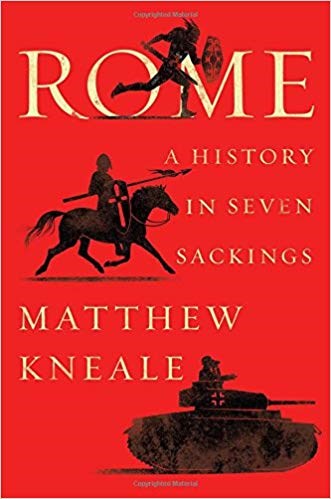Rome: A History in Seven Sackings by Matthew Kneale
As anyone who even dips a toe into conventional chronologies of Roman history quickly discovers, the story of Rome is long, violent and complex.
With the city influencing so much of western culture in areas as diverse as warfare, economics, engineering, government and law, and with the ever-shifting array of generals, kings, popes and emperors, the story can also be challenging to follow.
Author Matthew Kneale avoids all this by focusing on just seven of the many conflicts that shaped the city one can see today.
The seven sackings that Kneale covers starts with the attack of the Gauls in 387 BC continues through the invasion of the Visigoths in 408 AD and the Ostrogoths 128 years later (sidestepping the more well-known Punic Wars and most of the classical Empire period).
He continues on through the Norman attack in 1081, the Spanish one in 1527 and the French in 1849, and concludes with the Nazi occupation of Rome in 1943.
The author dedicates a chapter for each of the sieges.
He uses his novelistic skills to set the scene as the enemy approaches the city; he then draws back to provide historical context for the battle and describes the actual assault.
A final section on each sacking goes over the transformations the clashes made to Roman culture and society as well as the towers, walls and fortresses, and other physical manifestations that are still visible to a modern tourist.
I found the discussion in the final section of the huge physical changes Mussolini brought to Rome particularly interesting.
Even with the more focused approach of this book, there is still a lot of history to cover and a lot of the aforementioned generals, kings, popes and emperors to keep straight.
Kneale’s love of the city is a strong connecting thread through all the stories but the non-linear approach may not be to everyone’s taste.
I suspect an ideal reader of Rome: A History in Seven Sackings would be any traveller who wants to better understand what they are seeing as they wander the eternal city.



